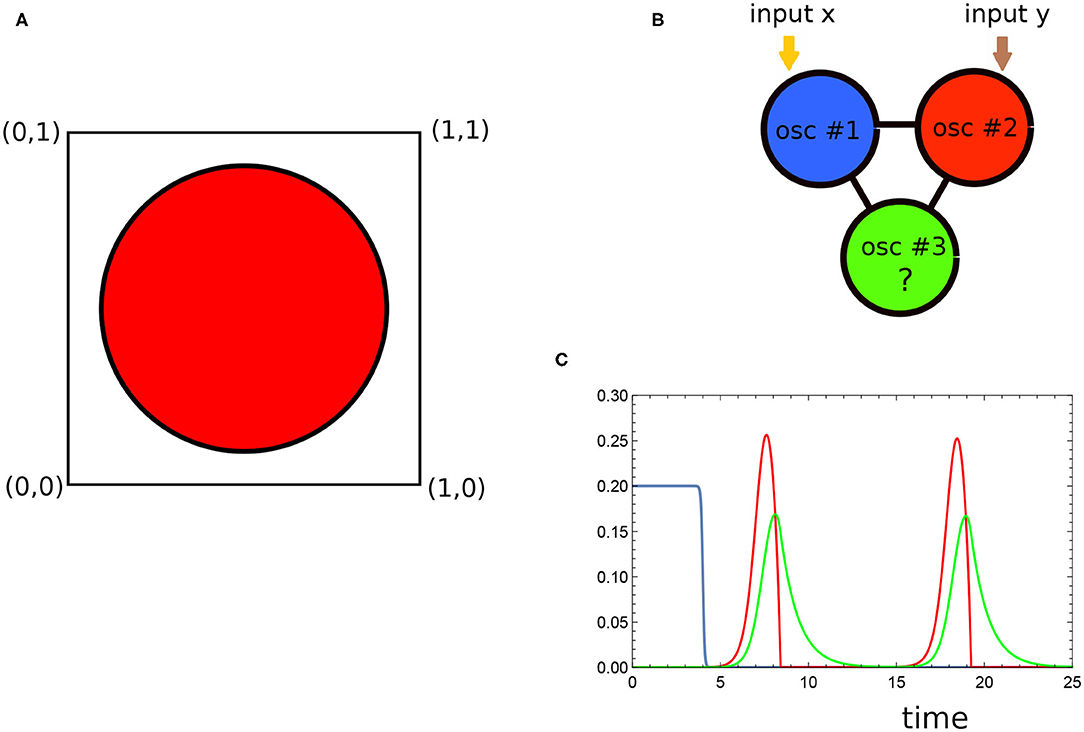How does a simple network of chemical oscillators see the Japan flag?
Gorecki, J., Bose, A.
Front. Chem., 09 November (2020) Vol.8, Article 580703
Abstract
 Chemical computing is something we use every day (e.g., in the brain), but we can still not explore and master its potential in human-made experiments. It is expected that the maximum computational efficiency of a chemical medium can be achieved if information is processed in parallel by different parts of the medium. In this paper, we use computer simulations to explore the efficiency of chemical computing performed by a small network of three coupled chemical oscillators. We optimize the network to recognize the white and red regions of the Japanese flag. The input information is introduced as the inhibition times of individual oscillators, and the output information is coded in the number of activator maxima observed on a selected oscillator. We have used the Oregonator model to simulate the network time evolution and the evolutionary optimization to find the best network for the considered task. We have found that even a network of three interacting oscillators can recognize the color of a randomly selected point with 95% accuracy.
Chemical computing is something we use every day (e.g., in the brain), but we can still not explore and master its potential in human-made experiments. It is expected that the maximum computational efficiency of a chemical medium can be achieved if information is processed in parallel by different parts of the medium. In this paper, we use computer simulations to explore the efficiency of chemical computing performed by a small network of three coupled chemical oscillators. We optimize the network to recognize the white and red regions of the Japanese flag. The input information is introduced as the inhibition times of individual oscillators, and the output information is coded in the number of activator maxima observed on a selected oscillator. We have used the Oregonator model to simulate the network time evolution and the evolutionary optimization to find the best network for the considered task. We have found that even a network of three interacting oscillators can recognize the color of a randomly selected point with 95% accuracy.



